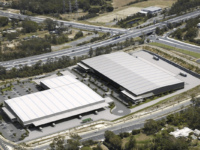 Recently Sydney hosted The Festival of Dangerous Ideas (FODI), bringing some of the worlds most exciting and progressive thinkers to the stage. One in particular was Martin Ford, raising the provocation in his talk ‘Hello Robots’ that technology and robotisation are creating a jobless future.
Recently Sydney hosted The Festival of Dangerous Ideas (FODI), bringing some of the worlds most exciting and progressive thinkers to the stage. One in particular was Martin Ford, raising the provocation in his talk ‘Hello Robots’ that technology and robotisation are creating a jobless future.
As robots are getting smarter, more flexible and more convenient they are coming for our jobs. And no occupation is truly safe with tasks requiring a distinctively human capacity for nuance becoming increasingly assigned to algorithms.
As everyone from lawyers, doctors, software designers, teachers, book reviewers, and the list goes on, now feeling the threat from automation what does the ‘rise of the robots’ pose for the future of retail? In particular the heavy numbers employed in customer service or on the front line.
This might all seem far off but we can already feel the threats. Let’s step back a minute. We know the biggest shift in retail today has been the complete redefinition of how shoppers purchase via the internet, smartphones and mobile. Australians, with one of the highest smartphone penetration rates, have adapted to an internet- enabled world with ease. We are in a revolution of transparency; as information travels more freely than ever, customers’ expectations are higher than ever.
Constant access to near-perfect and near-instant information means customers’ expectations are a reflection of what they see or hear as best practice, not necessarily a result of their direct experience. Armed with a smartphone, no matter where customers are or what they are seeking, the views and experiences of others – and with them, the security of pre-purchase confidence – are but a tap away. Social networks it seems are already replacing sales staff.
If it’s already changed considerably and with industry observers predicting retail to change more in the next 5 years than it has over the last century, how should we start preparing for this?
Wired magazine quotes an expert’s prediction that within a decade about 90 per cent of news articles will be computer generated. If computer programs can now write clear, publishable articles, what algorithm brilliance is set to disrupt retailers? Today 71 per cent of shoppers researching in-store trust online reviews more than the word of the salesperson. Many others prefer to instantly crowd source help via social media than to ask the advice of floor staff. With ordering and payment increasingly becoming electronic, will there be a need for human interaction at all?
Women’s fashion label, Rebecca Minkoff, knows its shoppers are driven by digital and want to be in control of their shopping experience. They have started bringing this into their service experience with Emily Culp, SVP saying: “the new definition of luxury is being able to be empowered to select the service level that she wants, when she wants, on the device that she wants.”
We know online price based algorithms are already rife. Platforms such as Shopstyle, Googleshop and StaticICE are ever present, scanning and collating price information to arm shoppers with decision-making confidence. Ideas that deliver more power to shoppers will continue to grow and have impact. Paribus monitors opportunities online to get money back if you have purchased anything with a price guarantee. The algorithm actually fights the retailer for your money back – leaving the shopper to lazily reap the rewards.
Not surprisingly, retail staff feel more insecure than ever with the challenge of taking on today’s increasingly educated and equipped shoppers. How can our front line staff compete with the vast knowledge and expertise of algorithms that scan every nook and cranny of the internet? Do we focus our attention on up-skilling, providing better opportunities to add value to the sell? Could we train our staff to have a ‘+ 1’ skill to their service, like fashion styling to give them an edge?
Or, should retailers simply embrace ever-advancing information technology. As one automating gourmet hamburger company put it “our device isn’t meant to make employees more efficient. It’s meant to completely obviate them.5”
We know the efficacy of floor staff to help and offer advice is reducing. iPads are becoming more present in change rooms so customers can get instant social feedback on their look from friends and family via the brand. This may reduce the effect a personal sales push has but at least the brand still has a part in the conversation. Could the future be in-store technology that scans social media providing shoppers with tailored solutions to fit their style, size, age or gender? Is this automated so the solutions are ready for them in the change room? Til we know how it should work, should we harness a combination of technology and the power of staff to drive upsell?
If 68 per cent of shoppers use their phone to search for information about an item while in a store we need to look to smarter search strategies or technology to intercept their path. Retailers need to look to how they can intercept shoppers new path to purchase to not only continue to create service value but remain in the consideration set.
So, how jobless is the future of retail? And how quickly do retailers need to embrace the robotisation of tomorrow, and even today? When deciding to buy, shoppers may still get the salesperson pitch but their likelihood to decide based on this is changing.
We need to start thinking that they no longer need, want or trust sales staff. And if this is the case, how long till we reinvest these funds elsewhere.
Nicky Bryson is a senior strategist at Leo Burnett Sydney, she can be contacted via email at Nicky.bryson@leoburnett.com.au.










